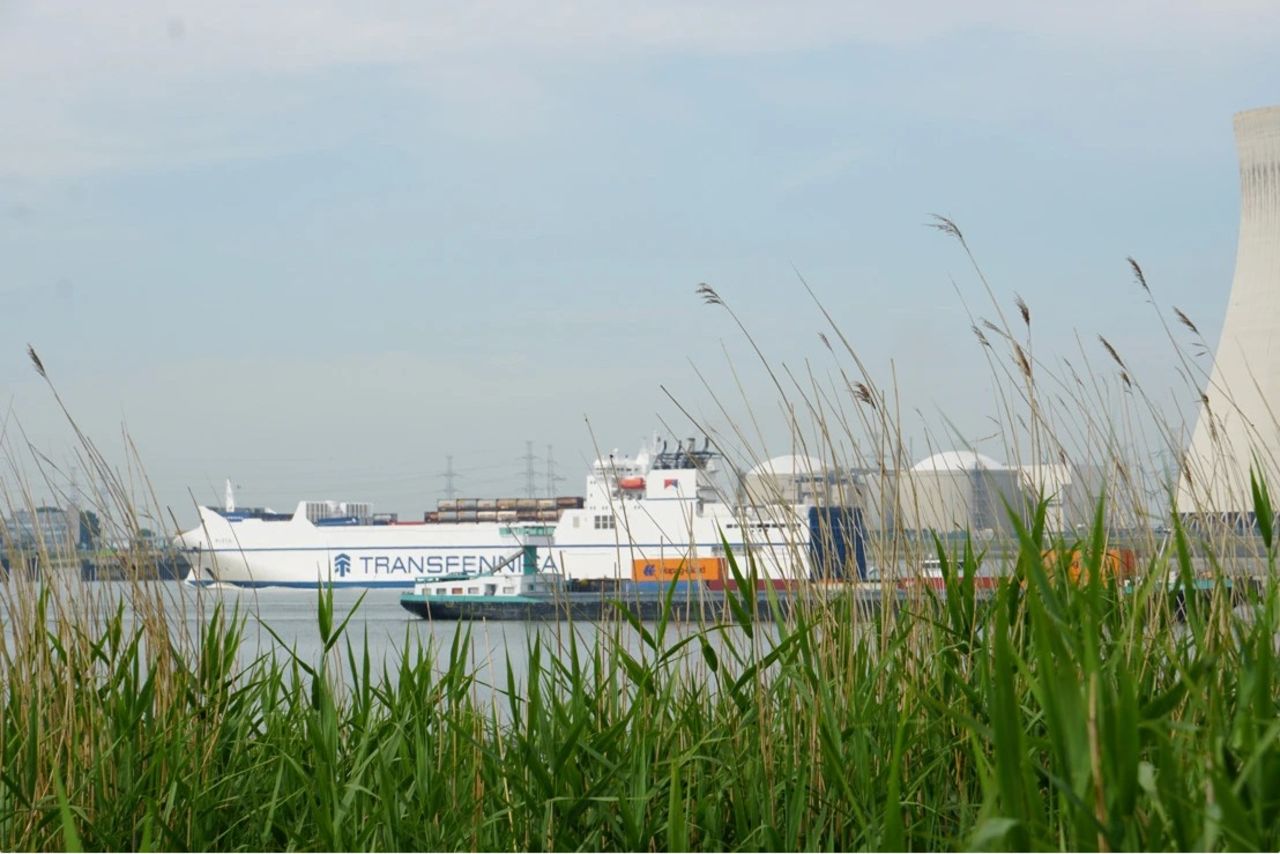With the start of engineering studies, the project has now reached a new milestone to achieve more sustainable, lower-carbon operations around the Port of Antwerp. The seven leading chemical and energy companies aim to make a significant contribution towards the climate objectives of Belgium and the EU. The project aims to collect and export CO2 for sequestration in offshore capacities in the coming years and at reasonable costs or to make it available for potential future reuse. After completion of the engineering studies, a final investment decision for the first phase is anticipated in late 2022.
An important next step has been taken in the realisation of Antwerp@C, which aims to reduce CO2 emissions in the port of Antwerp by half by 2030. With the start of the engineering phase, the joint CO2 infrastructure is now being further developed. In concrete terms this involves the construction of a central backbone through the port of Antwerp along the industrial zones on both the right and left banks of the Scheldt, a CO2 liquefaction unit with interim storage and maritime loading facilities for cross-border shipping. As one of the partners in the Antwerp@C consortium, INEOS fully supports this project and recognises CCUS as one of the paths to achieving net zero. Elsewhere in Europe, INEOS is also leading the way in developing carbon capture and storage. In Denmark, INEOS Energy leads the Greensand consortium, which has the potential to store 8 million tonnes of CO2 annually in the Siri and Nini gas fields of the Danish North Sea. INEOS is also closely involved in the development of the first CCS platform connecting Scottish industry to the Acorn platform in North East Scotland.
Start of Engineering studies (FEED phase)
After carrying out a feasibility study in 2021, Antwerp@C has now taken the decision to move on to the next phase and start engineering studies. These will further investigate the construction of a central "backbone" throughout the port of Antwerp along the industrial zones on both the Right and Left banks of the river Scheldt. Also part of the engineering studies is a shared CO2 liquefaction unit with interim storage and marine loading facilities for cross-border shipping. These studies are partially funded by a Connecting Europe Facility (CEF) grant, which was awarded in October 2020, by subsidies from the Flemish government for the feasibility-phase and by contributions of all consortium participants. After the engineering studies have been finalized, a final investment decision for the first phase is anticipated in late 2022.
In the meantime, Fluxys, Air Liquide and Pipelink (a subsidiary of Port of Antwerp) have organised an ‘Open Season’ in order to map the initial demand for the CO2 infrastructure which is proposed to be built. The Open Season was an invitation towards all companies in the wider port area of Antwerp to make their interest known for CO2 transmission and/or CO2 terminalling infrastructure in Antwerp. The response gathered from the market will be considered in order to a final investment decision.
The Port of Antwerp, a carbon capture pioneer
Port of Antwerp is home to the largest integrated energy and chemicals cluster in Europe. This makes it the ideal location to set up new, cross-border collaboration projects for innovative CO2 reduction. To this end, Air Liquide, BASF, Borealis, ExxonMobil, INEOS, TotalEnergies, Fluxys and the Port of Antwerp joined forces at the end of 2019 under the name of Antwerp@C, to investigate the technical and economic feasibility of building a CO2 infrastructure to support future CCUS (Carbon Capture Utilization & Storage) applications. Carbon Capture & Storage (CCS) and eventually also Carbon Capture & Utilization (CCU) – i.e. reusing CO2 as a raw material for the chemical industry – are seen as important routes in the Port of Antwerp’s transition to a carbon-neutral port. This innovative cross-border CCUS project would be among the first and world’s largest multimodal open access CO2 export facilities.
Jacques Vandermeiren, CEO Port of Antwerp: “The time is now to make the transition towards a carbon neutral economy. Europe leads the way on a global stage. With Antwerp@C, the port of Antwerp has the key to realize an innovative cross-border CCUS-project, a first of a kind in its concept and scale. We are very keen to move on to this next phase of engineering studies as this project will contribute to the Flemish, Belgian and European climate goals and to the increased EU 2030 targets for emission reduction to at least 55%.”Wouter de Geest, chairman of Antwerp@C: “The important decision to start the engineering of such a complex project reconfirms the commitment of all partners towards their climate ambitions. The support of this commitment by different authorities was indispensable to take this decision and will remain indispensable during the further development of the project. All together, we are much stronger and can transform the industrial cluster in the port of Antwerp.”Pascal De Buck, CEO Fluxys: “The Antwerp@C project is part of the overall project approach of Fluxys to help build the needed decarbonization infrastructure across Belgium and towards the neighboring countries. Both for CO2 and for hydrogen we work with specific infrastructure proposals, currently in 5 and shortly in 6 important industrial clusters. Together with the market, we prepare the infrastructure step by step. Within the industrial clusters, between the clusters and also with connections towards the neighboring countries like in Antwerp. This way, our country is set to become a hub for the molecules for a carbon neutral future.”
Picture: Port of Antwerp
